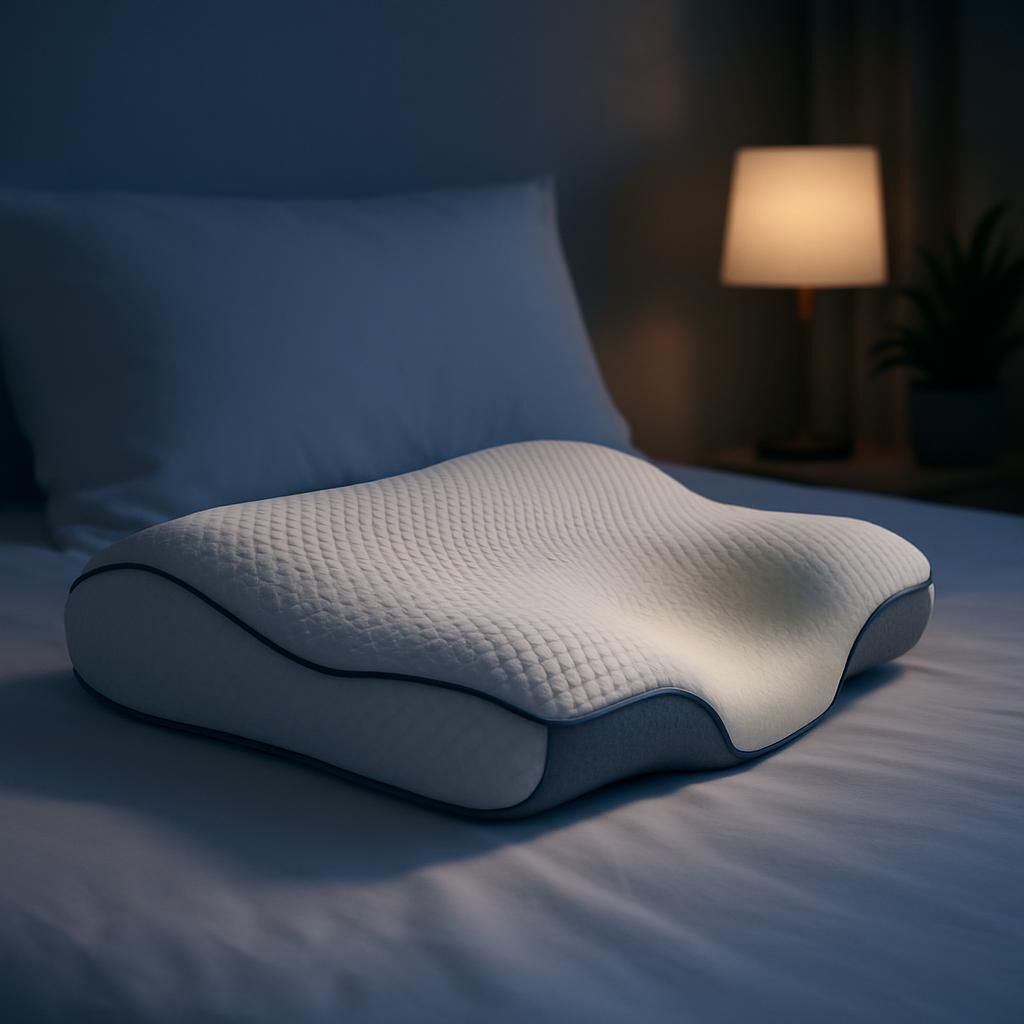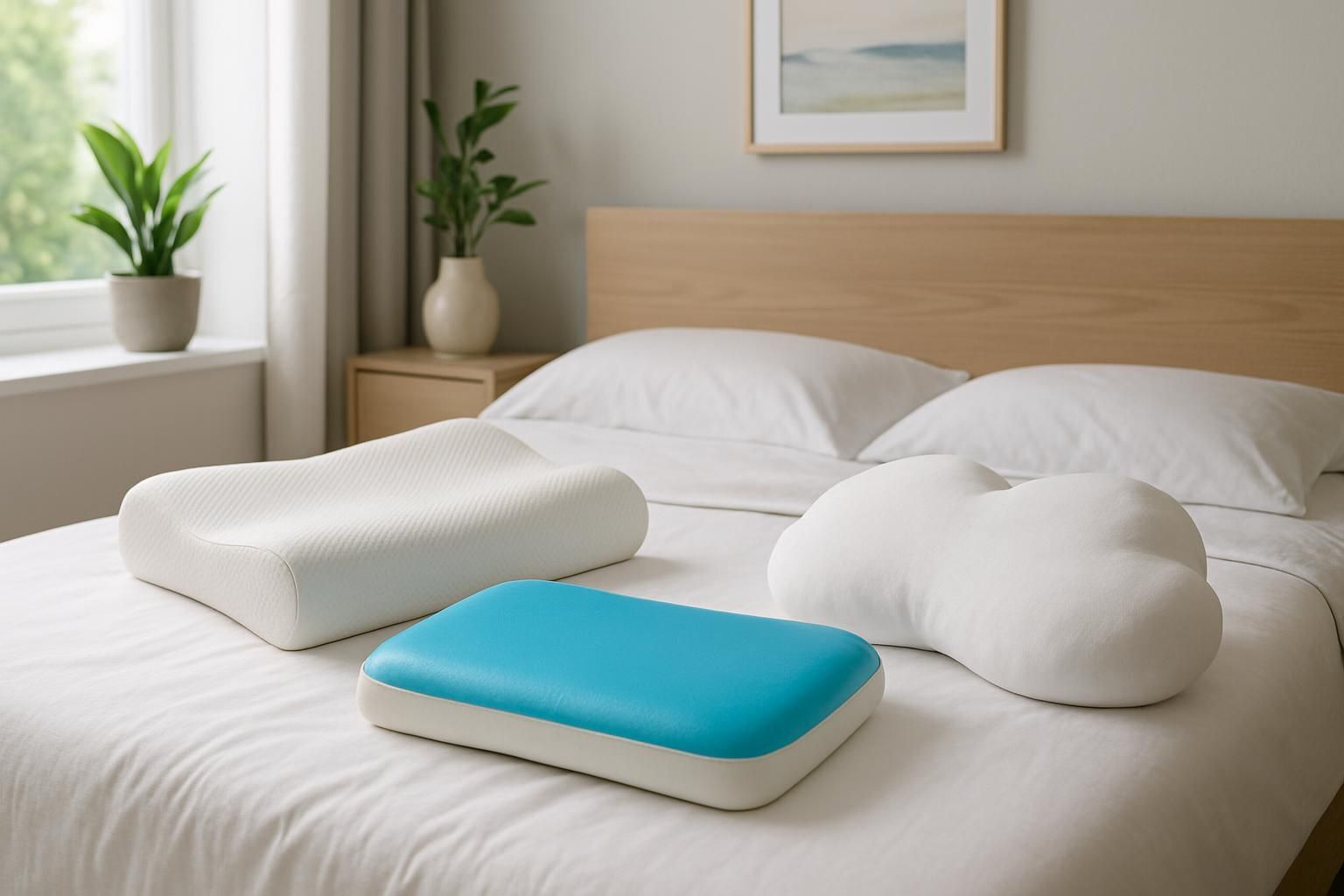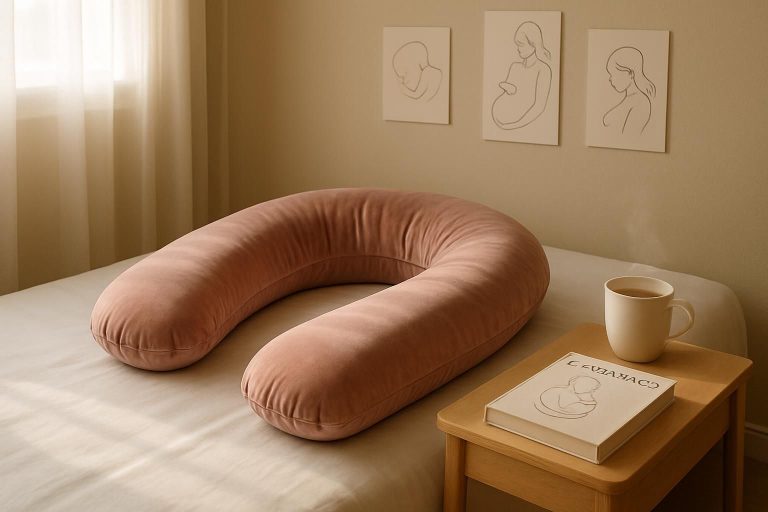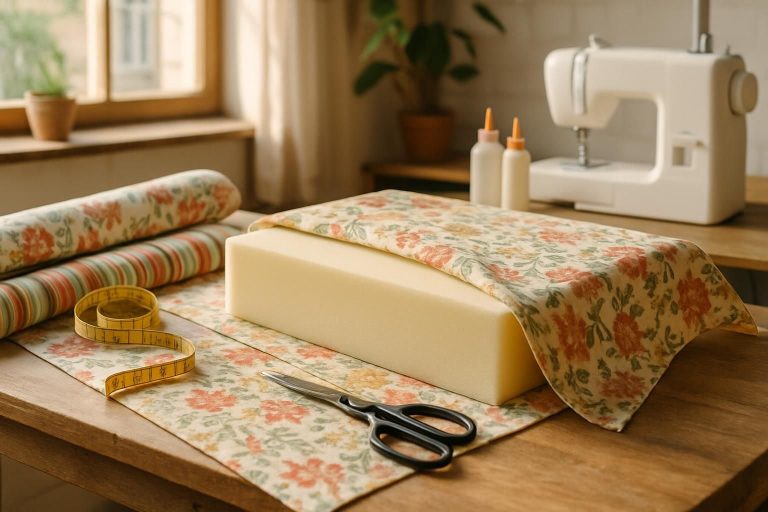Between recurring tensions and the quest for better nightly comfort, choosing the right cervical pillow fascinates as much as it questions. Neck pain is increasing in contemporary society, where screens and prolonged postures weigh on a particularly sensitive area of the body. While the pillow often proves to be an underestimated ally, technical and ergonomic solutions are emerging to restore the full restorative value of sleep. Whether it’s memory foam, latex, orthopaedic devices, or multi-purpose cushions, a wide range of options is now available for people suffering from neck pain or looking to prevent it.
Guided by the expertise of healthcare professionals (kinesiologists, osteopaths) and the evolution of Oeko-Tex certified materials, the pillow market emphasizes personalized cervical support. Brands like Emma, Tempur, Bultex, or even Wopilo, ZenPur, and Simba illustrate a shift in habits both in the bedroom and during travel. Beyond the product, it also involves practical advice, individual testing, and awareness of the importance of regular maintenance and replacement of your pillow. Here is a comprehensive overview to help you make informed decisions, prevent pain, and sustainably preserve your cervical health.

Neck pain: understanding the cause and daily impact
Why is the cervical area so fragile?
The cervical zone, located at the junction between the head and the rest of the spine, bears significant weight. On average, an adult’s head weighs between 4 and 6 kg: a constant load, especially when posture is not optimal. The cervical vertebrae, more mobile and thinner than those in the back or lumbar region, are therefore vulnerable to repeated stresses.
Microtraumas, such as sudden movements or prolonged fixed postures, promote muscle imbalances and inflammation. Chronic stiffness, torticollis, or the sensation of tension upon waking are warning signs of overload or poor distribution of head weight.
-
📱 Extended use of smartphones or tablets: head tilted down, cervical area bent.
-
🪑 Working on screens without ergonomic neck support: harmful static positions.
-
🏋️♀️ Lack of muscle strengthening: increased cervical vulnerability.
-
💤 Poor pillow or overly flat cushion: lack of support during sleep.
Those who suffer from it confirm: neck pain can turn even the simplest daily actions into a series of constraints. This fragility also explains the need for a proper cervical pillow to maintain comfort and limit pain.
Stress, poor postures, and head weight: aggravating factors
Chronic stress often manifests as involuntary contraction of the trapezius and neck muscles. This constant tension exacerbates neck pain, especially when combined with poor posture at the computer or reading habits in bed.
Work postures, often unsuitable, have a heavy toll: a head tilted at 30° to look at a smartphone multiplies the load on the cervical area by nearly four! Recent studies warn about what professionals call “text-neck” or “smartphone syndrome.”
-
🛋️ Poorly arranged home office
-
📚 Reading or watching TV in a slouched position
-
⏳ Accumulation of muscle fatigue by the end of the day
Adjusting your pillow and correcting these habits is essential for lasting relief and pain prevention. The combined effect of these factors makes nighttime recovery more difficult, highlighting the importance of considering your pillow carefully.
Why choosing an appropriate cervical pillow improves sleep quality
Connection between an inappropriate pillow and nighttime pain
A poorly chosen pillow disrupts sleep quality by creating pressure points. Too flat, it does not support the neck properly; too bulky, it increases cervical flexion. The result: micro-wakes, stiffness upon waking, or even migraines and pain radiating into shoulders or back.
Clinical studies show that an ergonomic, suitable pillow helps reduce the frequency and severity of neck pain. Memory foam, latex, or orthopaedic models provide tailored support, respecting the natural curvature of the spine.
-
🛏️ Reduces the risk of nighttime awakenings caused by neck discomfort
-
😴 Promotes faster fall asleep
-
👍 Reduces muscle tension accumulated during the day
-
🏆 Enhances physical and mental recovery
Offering yourself an ergonomic pillow suited to your needs is an investment in your daily well-being. This often leads to the development of other virtuous habits, such as stretching upon waking, creating a virtuous circle.
|
Problems of an inappropriate pillow 😩 |
Benefits of an ergonomic cervical pillow 💤 |
|---|---|
|
Neck pressure points |
Even distribution of head weight |
|
Incorrect curvature of the cervical spine |
Maintained spinal alignment |
|
Painful awakenings |
Limited stiffness upon waking |
|
Poor recovery |
Freshness and energy sensations |
What are the different types of pillows for neck pain?
Memory foam pillow: personalized comfort 🌙
Memory foam is arguably the most popular choice for shaping to each sleeper’s morphology. When warmed by body heat, it softens to distribute pressure evenly and provides optimal ergonomic support, preventing excessive tension in the neck area.
Reputable brands such as Emma, Tempur, Bultex, or ZenPur offer memory foam pillows of various densities, some with ventilation holes to reduce sweating. The choice depends on density and height, tailored to body shape and sleeping position.
-
🌙 Ideal for people with chronic pain
-
🌟 Excellent adaptation for sensitive necks after a tense day
-
🔇 Reduces nocturnal movements caused by discomfort
-
🦋 Offers butterfly, wave, or rectangular shapes to suit individual preferences
Memory foam, certified Oeko-Tex, also guarantees the absence of harmful substances for health—a plus for allergy sufferers or eco-conscious users.
Who should choose a memory foam pillow?
This type of pillow is particularly recommended for those who:
-
🛏️ Have recurrent neck pain
-
💼 Work long hours sitting at a screen
-
🧑🔬 Experience muscle tension due to stress
-
🧘♀️ Seek adaptable comfort throughout the night
Note that some models (Emma, Bultex, Tempur) are designed with multiple heights or include modular inserts to fine-tune support. They are among the preferred pillows by physiotherapists and osteopaths to prevent and relieve neck pain.
Orthopedic cervical pillow: optimal support 😴
The orthopedic cervical pillow is designed to precisely follow the natural curve of the neck vertebrae. Usually made of high-density memory foam, it provides targeted support and remarkable stability throughout the night.
The « wave » or « double wave » shapes are intended to stabilise the neck regardless of sleep position. These pillows effectively prevent poor nocturnal postures by avoiding neck compression or excessive shoulder widening.
-
✅ Relieves pressure points on the neck
-
😴 Keeps the head and spine aligned
-
📏 Ideal for cervical osteoarthritis to limit painful movements
-
💆♂️ Recommended after trauma or prolonged immobilization
The comparison between traditional and orthopedic pillows shows a clear reduction in stiffness sensations and improved falling asleep. Bultex and Tempur models are excellent examples.
Latex pillow: breathability and hypoallergenic options
For people prone to nocturnal sweating, the natural latex pillow combines breathability, firmness, and hypoallergenic properties. Latex’s elasticity provides a firm support paired with a pleasant « spring » effect during position changes.
-
💨 Effective moisture evacuation
-
🍃 Durable and eco-friendly solution
-
🛡️ Limits dust mite proliferation
-
👍 Prevents premature sinking
Latex pillows are suitable for sleepers who prefer a soft touch but high cervical support. Their maintenance is easier thanks to latex’s resistance to repeated washing.
Heating/massaging cushion: a supplementary solution to relieve tension
In case of muscle contractions or occasional pain, heating or massaging cushions can be used as an auxiliary solution to soothe discomfort.
agissent en complément : la chaleur détend la musculature du cou, favorise la circulation sanguine et réduit la raideur matinale. Certains modèles proposent des mini-moteurs vibrants pour un effet détente immédiat.
-
🔥 Immediate relief after a busy day
-
💆♀️ Reduces post-trauma stiffness
-
🚫 For occasional use only, not as main pillow
-
🕒 Prevents the occurrence of chronic pain if used wisely
Electric or microwave-heated models fit into a comprehensive wellness routine, especially for profiles suffering from persistent tension related to stress or cold.
|
Type of cushion 🛌 |
Main material |
Key benefits 🌟 |
Ideal for which profile? |
|---|---|---|---|
|
Memory foam pillow |
Viscoelastic foam |
Morphological adaptation, pressure point reduction |
Chronic pain, varied sleeping positions |
|
Cervical orthopedic pillow |
High-density foam |
Optimal support, spinal alignment, cervical osteoarthritis prevention |
Osteoarthritis, post-injury recovery, precise alignment needed |
|
Latex cushion |
Natural or synthetic latex |
Breathability, firmness, hypoallergenic solution |
Sweating, allergic sensitivities, preference for firmness |
|
Heating/massaging cushion |
Fibers + electric circuit |
Relaxation, soothing warmth, occasional use |
Transient tension, post-day relaxation |
How to choose the best cushion for your neck?
The height of the pillow and its relation to your morphology
The height of the pillow determines the alignment of the head with the spine. An excessively high or low pillow causes abnormal flexion, leading to tensions. It is essential to adjust this feature according to your morphology (shoulder width, neck length) and sleeping position.
-
📐 Small build: opt for a flatter pillow
-
🏋️♂️ Broad shoulders: choose a taller pillow
-
🔎 Try at Emma or Wopilo: many models with various heights
-
🛑 Avoid very flat pillows for side sleepers
A testing period of a few nights is often necessary to validate the height choice and its adaptation to the cervical pillow.
Firmness, materials, and ergonomic shape: what to prioritize?
The choice of firmness and materials greatly influences the pillow’s effectiveness. Memory foam offers an ideal compromise between softness and support, while latex provides dynamic support.
-
🔲 Memory foam: suitable for most cervical pains
-
🍀 Latex: firmer, highly breathable, durable
-
🦋 Butterfly, wave, or ergonomic shape: adjust according to needs
-
✅ Quality labels (e.g., Oeko-Tex): guarantee safety and durability
Models from Bultex, Tempur, or Simba feature ergonomic shapes designed to cradle the neck while allowing necessary movement. Ergonomics should take precedence over aesthetics to protect the cervical area.
Remember: support, ergonomic shape, and material quality are inseparable in choosing the optimal pillow for neck health.
Adapting your cervical pillow to your sleeping position
Pillow tips for back sleeping 🛏️
The back sleeping position is the most recommended for cervical preservation. It requires a pillow of medium thickness, not too firm or too soft, providing uniform support for the neck and base of the skull.
-
🛏️ Ergonomic memory foam pillow: allows proper head-spine alignment
-
📏 Height adapted to cervical curve
-
🦋 Wave or classic shape with raised edges
Example: The ZenPur model, available in several sizes, allows this customization.
Ideal pillow for side sleeping
Lateral sleepers require a higher pillow to fill the space between the shoulder and the mattress: the pillow must support the neck without forcing the tilt. “Butterfly” or rectangular memory foam models are perfect options.
-
💪 Significant height to align neck and spine
-
🌙 Memory foam or latex to prevent sagging
-
🔄 Recommended preliminary test to check comfort at night
The Dodo range offers pillows suitable for this body type.
Precautions for stomach sleepers
The prone position heavily involves neck rotation and increases the risk of neck pain. Ideally, a transition to sleeping on your back or side should be preferred. If changing habits is not possible, a very flat pillow or no pillow at all limits cervical torsion.
-
🦋 Flat and soft shape in memory foam
-
🌀 Favor minimal support, avoid accumulation under the head
-
🛑 Watch out for morning stiffness or muscle contractions
It is advisable to consult a professional if the prone position causes repeated pain.
Focus on travel cervical pillows: choosing the right for each trip
Ergonomics and neck support in seated position
Travel, whether daily or occasional, exposes to poor posture when seated. The travel cervical pillow wraps around the neck and stabilizes the head to avoid abnormal flexion during sleep in transit.
-
🚗 U-shaped or “wrap” design for lateral support
-
🛬 Compact memory foam to fit the neck
-
🌡️ Some models equipped with cooling gel
-
🧳 Lightweight and practical: ideal for airplane, train, or car
A good travel pillow offers notable comfort during long journeys, reducing the risk of pain upon arrival.
Practical advantages for long trips 🚗✈️
Beyond its prophylactic effect, the travel pillow is distinguished by its ease of transport: compact, removable cover, often machine washable, it effortlessly accompanies all types of travel.
-
📦 Easy storage in a dedicated case
-
⚖️ Featherweight to avoid adding weight to luggage
-
🧼 Easy maintenance for impeccable hygiene
-
✅ Useful support during reading or resting on the spot
Lea’s experience, a young professional traveling every other week, clearly illustrates the role of this small accessory: fewer neck aches, less tiring trips, and the sensation of restful sleep, even while traveling.
|
Criteria |
Home 🏠 |
Travel 🚗✈️ |
|---|---|---|
|
Neck support |
Optimal (memory foam, latex) |
Good lateral support (U-shape) |
|
Ergonomics |
Personalized body adaptation |
Standardized for most body sizes |
|
Maintenance |
Removable, washable cover |
Easy to wash, quick drying |
|
Transport |
For home use |
Compact, lightweight, portable |
Maintenance, lifespan, and proper adaptation to a cervical pillow
Normal adaptation period and signs of wear
The pillow change requires an adaptation period: it takes from 3 to 15 nights to fully experience the benefits of the new cervical pillow. The memory foam gradually molds to the neck’s shape and stabilizes support, while latex softens slightly with use.
-
🔄 Possible initial tension, quickly dissipated
-
🧐 Increased comfort sensation from the first week
-
💤 Progressive disappearance of morning pains
A cervical pillow should be replaced every 2 to 3 years; signs of wear include: foam sagging, loss of elasticity, persistent stains even after washing.
How to know when to replace your cervical pillow? 🔄
-
🧺 Visible deformation of foam or latex
-
🌫️ Persistent odor despite cleaning
-
✨ Reduced “memory foam” effect
-
🦠 Presence of allergens, more frequent skin reactions
Performing a regular test (checking foam distribution, support upon waking) helps anticipate replacement and guarantees continuous comfort.
Washing and maintenance tips for hygiene and durability
Maintaining a cervical pillow
FAQ : Frequently Asked Questions about the cervical pillow
How to recognize a good cervical pillow?
A good cervical pillow is characterized by its ability to follow the natural curve of the neck, its stability during sleep, and the quality of its materials (memory foam, breathable latex). The Oeko-Tex certification provides an additional guarantee of safety.
Can a memory foam pillow be used in case of cervical osteoarthritis?
Yes, it is actually one of the preferred choices: it absorbs pressure points, supports the neck, and limits painful mobility, a recommendation shared by many physiotherapists and osteopaths.
What maintenance should be planned for an ergonomic pillow?
Wash the cover in the machine every two months, regularly air out the foam or latex, avoid humidity, and monitor for sagging. This routine prolongs the pillow’s lifespan.
Test or trial: how many nights to adapt?
Most users find their rhythm within 8 to 15 days, the time needed for memory foam to “settle” the cervical area permanently.
What to do if pain persists despite a good pillow?
It is advisable to consult a healthcare professional (doctor, physiotherapist). Sometimes, re-education or postural work is necessary in addition to changing the cervical pillow.



